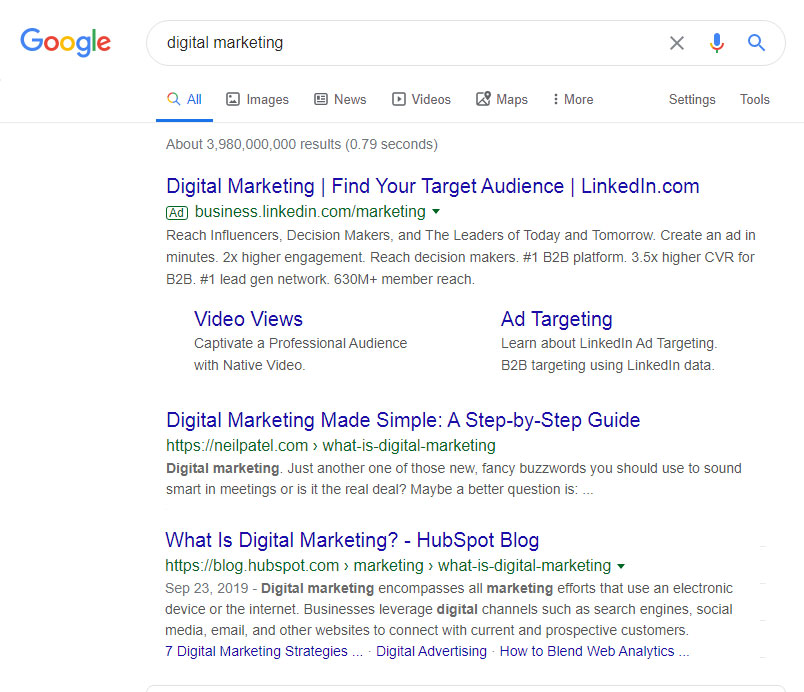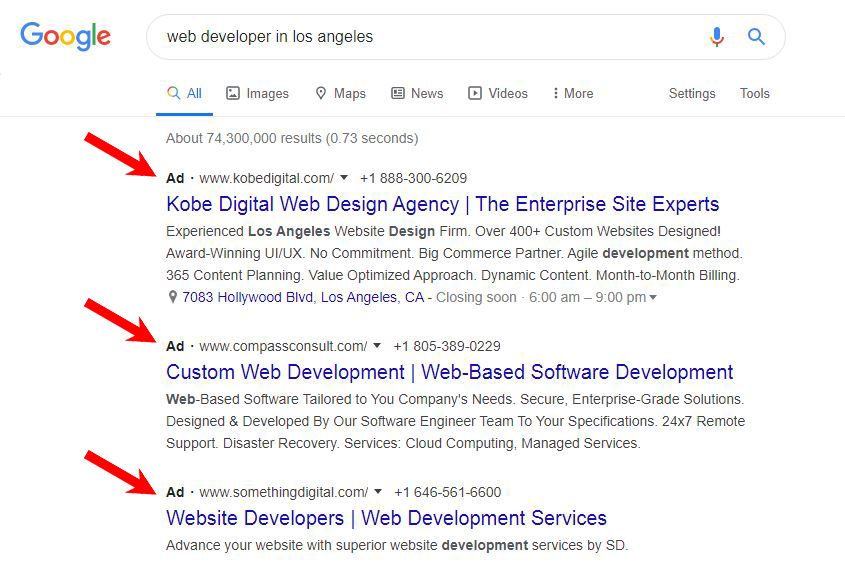SEM vs. SEO: What’s the Difference and Which is better for Your Business?
By Weby Ditor | March 6, 2020Search Engines are one of the most powerful tools we have today. People, from all walks of life use Google to find solutions, learn new things, and understand the world around. In this climate, many small to large businesses use search marketing to be known, to gain and grow their companies.
Search Marketing is an essential marketing strategy for brands trying to attract attention, drive website traffic, and grow their business. But search marketing can be a difficult strategy to manage if you don’t know how to compare SEM vs. SEO. They may sound similar but both of them can't be used interchangeably.
It is important for you to know the differences between the two so you would be able to communicate an effective and clear strategy for improving your ranking on search.
But first, let us know and understand what Search Marketing is.
What is Search Marketing
Search Marketing is a tactic used to gain online presence and traffic via paid and unpaid strategies on search engines such as Google, Bing, and Yahoo.
When you searched for something whether that be on Google, Bing or Yahoo, you type something on the search box, which then directs your to a page similar to the image below.

This page is known as a SERP (or Search Engine Results Page). The higer rank you are on SERPS, the higher the chance of you getting more traffic on your business' website. But the question is how does Google or any search engine determine who ranks on top placements? This is where search marketing comes in to play.
Why is Search Marketing important?
As mentioned above, millions of individuals around the world hops on the internet to search for something. Wouldn’t you like your business to appear in the search results to provide them with the solution they’re searching for? This is why search marketing is a critical strategy for all businesses who want to gain and grow their companies.
There are two major categories within search marketing.
1. SEM or Search Engine Marketing: which uses PAID strategies to appear in search, also know as PPC or pay-per-click ads.
2. SEO or Search Engine Optimization: Gaining Search Engine Listings, using organic strategies.
The main difference between SEM vs. SEO is that SEM is a paid strategy and SEO is an organic strategy.
Search Engine Marketing (SEM)

SEM is the practice of increasing your website’s visibility on search engines through paid search advertising, social media marketing, and SEO.
Using SEM, often refers to PPC or pay-per-click advertising, you’re essentially buying advertising space on search engine results pages. While there are many PPC platforms, the most popular option is Google Adwords.
Paid search ads can be found on almost any search results page. These paid placements are typically located at the top and bottom of the page. They include an “Ad” designation to let users know that it is a paid placement.

Some paid search ads may also appear as products in a featured carousel.
Search Engine Optimization (SEO)

SEO is the practice of optimizing your website and content organically in order to naturally increase your ranking in search engines. With SEO, brands don’t pay for placement on SERPs. It involves the use of various tactics that prompt search engines to show their content near the top of SERPs because the result is valuable and authoritative.
Organic search results don’t have an “Ad” sign on their results. They are not paid for; they are earned.
The are two main types of SEO : onsite SEO and offsite SEO.
On-site SEO consists of:
✔ Optimizing metadata, including meta descriptions, heading tags, and alternative text for images.
✔ Optimizing images
✔ Clear URL Structures with suitable keywords.
✔ Relevant keywords
✔ Social media integration
Off-site SEO consists of:
✔ Building backlinks naturally from quality sites
✔ Social media marketing
✔ Influencer marketing
✔ Directory Submission
✔ Encouraging user reviews
SEM vs. SEO: Which is better for Your Business?
Some people consider SEM traffic to be more valuable because it’s more targeted. If you are looking for a quicker result, and you have a budget, paying for PPC ads will do for you. It is also easier to compete with big brands on search engine results pages. However, if you have limited budget, it makes more sense to invest in creating SEO content to increase your organic search ranking.
For example, if you are launching a new website, an SEM campaign is great for instant online presence. However, it’s very costly to keep paying for ads all year. Although SEO takes months to see results, it’s less costly and offers great benefits on the long run. Additionally, people tend to click on organic results more than paid ads, so SEO has the advantage of building your credibility.
A combination of SEM and SEO is often the best option for you if you want to go. This way, you can adapt your strategies to suit your changing budget and your specific marketing goals.
When combined, SEO and SEM will help maximize your online reach and convert more qualified traffic into interested customers.
If you are interested in either or both services, we can help you in elevating your SEO and SEM efforts. Contact us now!






